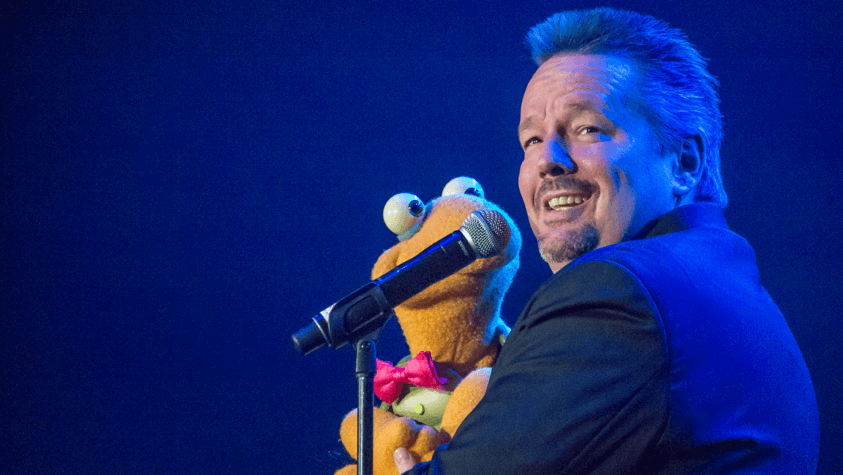By TACP Staff on July 08, 2021

Ventriloquism is a form of entertainment in which one or more artists use their voices to create the illusion of a human voice coming from a prop—usually from a puppet, known as a “dummy”, but sometimes from the body of the ventriloquist himself or herself. It is used in comedy, magic shows, and animated films. Aspects of ventriloquism appear in art forms as varied as opera and ballet.
Ventriloquism has been practiced for centuries in different forms, dating back to ancient Egypt. In the Middle Ages, it was used by monks to frighten unruly children. In the 18th century, ventriloquists began appearing in theatrical shows and later became a popular part of Victorian stage shows, fairs, and circuses. In the 19th century, ventriloquism entered the medium of late-night vaudeville shows and circus acts. Early American ventriloquists included Washington Irving, Edgar Allan Poe, and P.T. Barnum.
A ventriloquist is someone who has mastered the art of “throwing” the voice, which is a technique used to make the spoken words seem to come from a source other than the speaker. Ventriloquists manipulate their voices to create the illusion that their voice is originating from a distance; usually, a puppeteered prop that is part of the act. This unusual talent is achieved by speaking with your voice, while simultaneously controlling your vocal cords to shape and change your natural, spoken voice into what is heard. Ventriloquists are known for entertaining their audiences with funny and amusing dialogues between themselves and their puppets.
A ventriloquist disguises their voice to create an illusion that the voice is coming from the mouth of a prop or dummy, instead of their own. Ventriloquists achieve this deception by moving the mouth of the dummy while keeping their own lips still. This technique is accentuated by animating the dummy through head and body movement, which makes the dummy seem like it is alive.
The sound produced by a ventriloquist is formed by narrowing the passage of the glottis and mouth while retracting the tongue, which allows the words to be formed in a normal manner, but diffuses the sound creating an illusion of distance. Together, good technique and closely choreographed puppeteering can produce a convincing and entertaining act.

The Art Career Project is a trusted resource for emerging and professional artists.